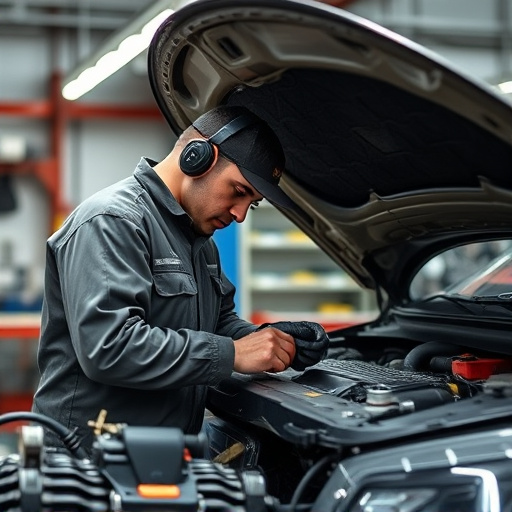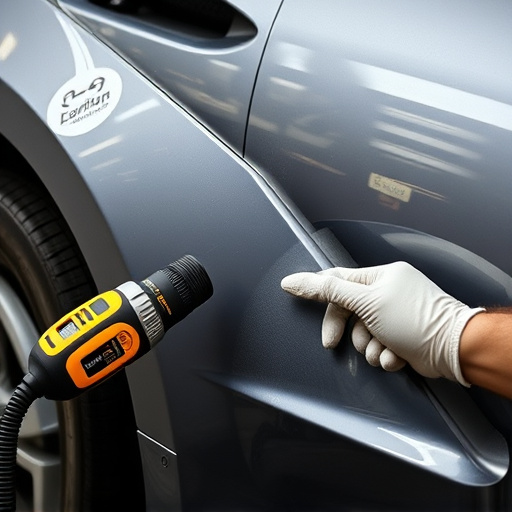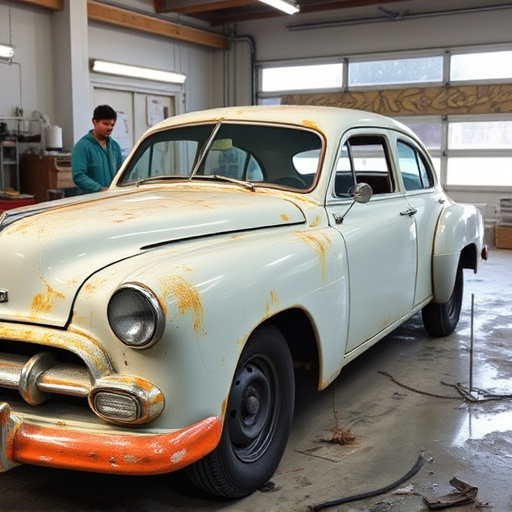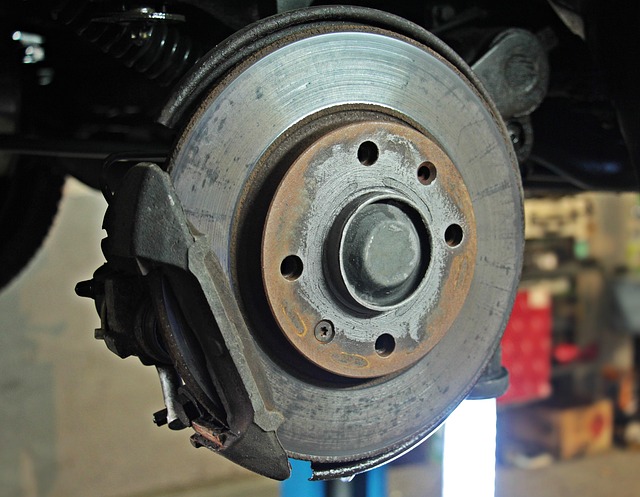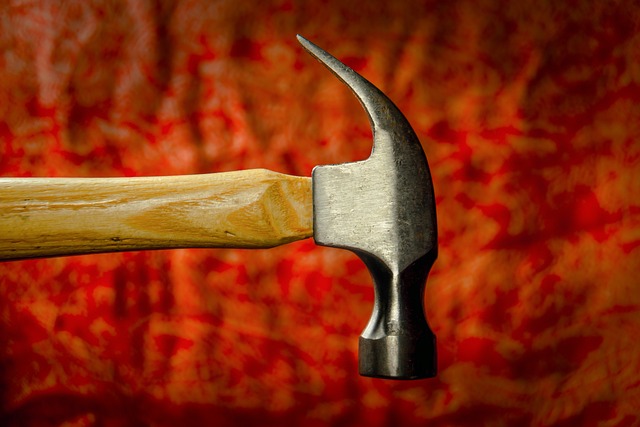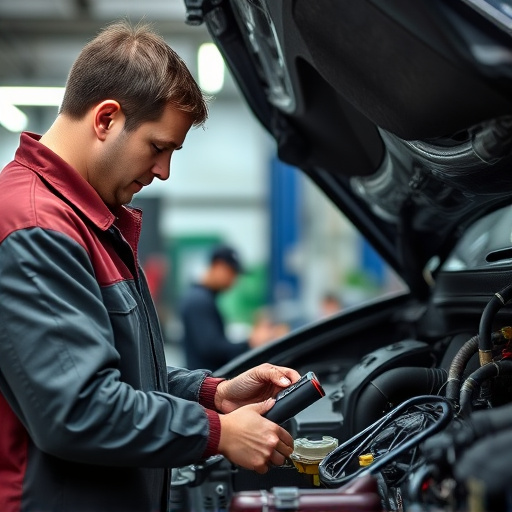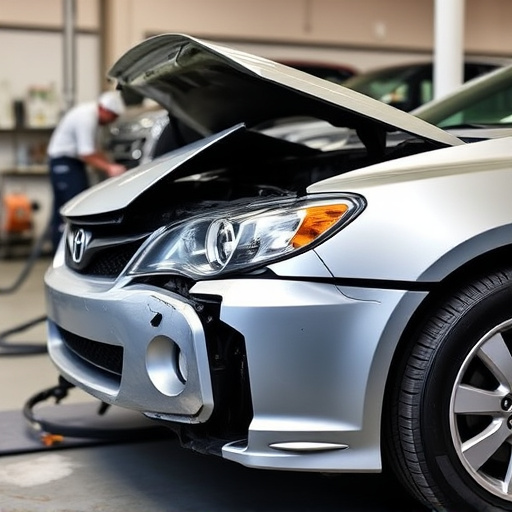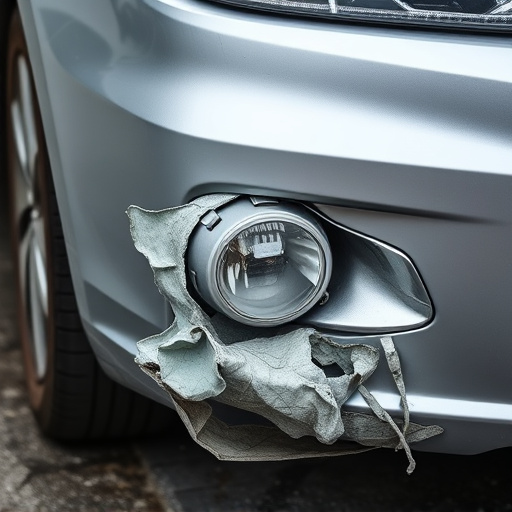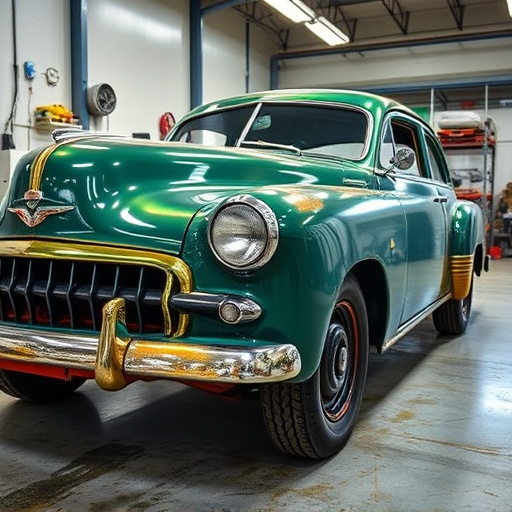For top-quality fiberglass panel repair, use specific resins and hardeners for optimal bonding, choosing based on damage type, climate, and desired finish. Employ specialized tools like brushes, rollers, knives, sandpaper, and heat guns for even resin application, excess removal, and a smooth finish. Avoid general adhesives; follow manufacturer guidelines for mixing. A well-equipped toolkit ensures precise, efficient repairs comparable to professional vehicle body services.
Maintaining a flawless fiberglass panel repair requires attention to detail and the right approach. This comprehensive guide will walk you through the process, ensuring long-lasting results. We’ll start by highlighting the significance of choosing compatible fiberglass panel repair materials and essential tools for a successful project. Then, we’ll dive into meticulous preparation techniques, including surface cleaning and contamination removal, to create an ideal repair environment. Finally, learn the art of applying resin and understanding curing processes to achieve robust, durable repairs.
- Choosing the Right Materials and Tools
- – Selecting compatible resins and hardeners
- – Essential tools for a successful repair
Choosing the Right Materials and Tools

When tackling a fiberglass panel repair, selecting the appropriate materials and tools is paramount to achieving long-lasting results. Opt for high-quality fiberglass resins and hardeners suitable for the specific type of damage being repaired. These products ensure a strong bond and seamless integration with the existing panel. Remember, using inferior or mismatched materials can compromise the repair’s integrity.
Additionally, invest in the right tools to facilitate the repair process. This includes brushes, rollers, knives, and sandpaper designed for fiberglass work. Proper tools enable even application of the resin, efficient removal of excess material, and smooth finishing, ultimately reflecting in the final car body restoration or collision repair center’s output.
– Selecting compatible resins and hardeners

When undertaking a fiberglass panel repair, choosing the right resins and hardeners is key to achieving long-lasting results. Compatibility between these components is crucial, as they work together to create a strong bond that matches the original material. Look for products specifically designed for fiberglass repairs, as they are formulated to provide optimal adhesion and durability. Avoid using general-purpose adhesives or fillers, as they may not set properly or withstand environmental factors, leading to future issues with your auto maintenance.
The right combination will ensure a seamless integration of the repair into the existing panel, making it nearly impossible to distinguish between the original and collision repair services. Consider factors like climate conditions where the vehicle will be used and the type of finish expected (matte, glossy, etc.). Always follow manufacturer guidelines for mixing ratios and application techniques to guarantee the best outcome in your fiberglass panel repair.
– Essential tools for a successful repair

Achieving successful results in a fiberglass panel repair requires a well-equipped toolkit tailored for the job. Essential tools include a sharp utility knife for cutting and shaping, a sandpaper set with various grits to smoothen and refine the repair area, and a high-quality resin and hardener specifically designed for fiberglass. A heat gun is also crucial for curing the resin efficiently.
Additionally, consider having a degreaser to ensure the surface is clean and free from any contaminants, as well as gloves and safety goggles to protect against chemicals and debris during the repair process. Accessory tools like putty knives, clamping devices, and mixing palettes can significantly enhance precision and efficiency in fiberglass panel repair, making it easier to achieve professional-grade results comparable to vehicle body repair or auto body services.
To ensure long-lasting results from your fiberglass panel repair, it’s crucial to use compatible resins and hardeners, along with the right tools. By carefully selecting these components and mastering their application, you can achieve a strong, durable fix that stands the test of time. Regular maintenance and prompt attention to any signs of damage will also contribute to keeping your fiberglass panels in top condition, making them a reliable and low-maintenance choice for years to come.

